A timeline of seat belt history begins nearly two centuries ago, but it’s only been in the past few decades that the safety feature – and its use – have become commonplace. It was an uphill battle, one that included laws, education and technological improvements, to get the public to latch onto these life-saving devices.
It’s a good thing they did – seat belts have been credited with saving thousands of lives per year and are considered to be one of the most cost-effective public health inventions ever. But as recently as the late 1970s and early 1980s, seatbelt use was only between 11% and 14%. Seatbelt use grew the most between 1984 to 1987, when 29 states adopted mandatory seat belt laws.
So how did seat belts go from an afterthought to a necessity? Let’s take a look.
Prefer an audio summary of this post? Click below to listen to this article.
Mid-1800s – The Seat Belt History Timeline Begins
Sir George Cayley, a wealthy landowner in Yorkshire, England, invented the first seat belt way back in the 19th century. Cayley was highly interested in aerodynamics and the principles of flight. He is credited with building the first successful manned glider, a half-century before Orville and Wilbur Wright took to the air. Inside the aircraft, Cayley included a lap belt to keep the pilot in place.
His first test flight crashed landed – the pilot survived.
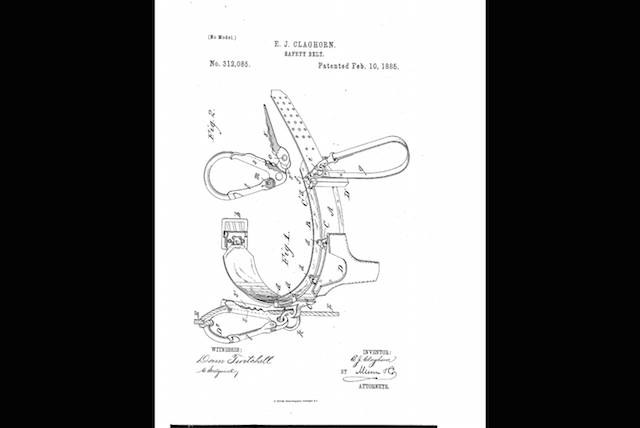
1885 – The First Seat Belt Patent Is Granted
On February 10, New York City resident Edward J. Claghorn was awarded the first U.S. patent for a vehicular seat belt. It was devised in order to keep tourists safe as they rode in taxis. The seat belt looked more like a modern climbing harness, consisting of a strap that used hooks to secure a rider to the seat.
1922 – The Seat Belt Comes to the Indy 500
Barney Oldfield, a racing pioneer and the first person to drive 60 mph, recruited a parachute manufacturer to design a restraining harness for his Indy 500 car. Oldfield had seen several drivers get hurt, and even die, after being ejected from their vehicles.
Prior to this (and in the decades following) seat belts were rarely worn. One myth that prevailed during this time was that it was safer to be flung from the car than remain inside the vehicle as it crashed and potentially burned. Manufacturers, meanwhile, believed that if they included too many safety features, it would give consumers the impression cars were unsafe.
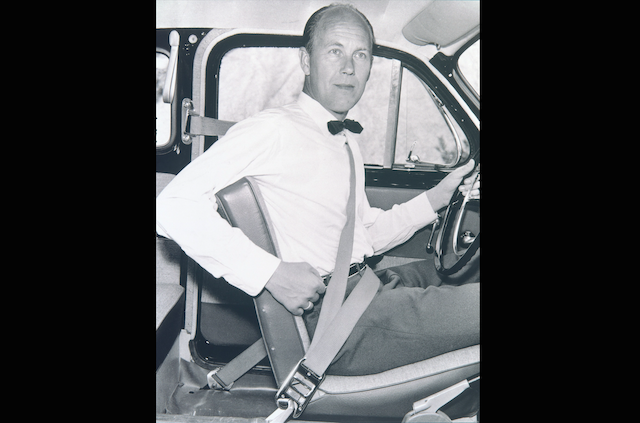
1959 – The Three-Point Seat Belt Is Invented
The most important evolutionary step in seat belt history occurred in 1959 when Swedish engineer Nils Bohlin invented the three-point seat belt. Volvo Car Corporation hired Bohlin the year prior as the company’s first chief safety engineer. He had previously worked designing ejector seats for fighter airplanes.
Two-point seat belts only secured the passenger’s lap (and were hardly ever worn at the time). The four-point belts Bohlin was used to in airplanes were untenable in cars. His solution was a three-point seat belt that used one continuous belt. One section ran diagonally across the body while another section crossed the lap, creating a restraint for both the upper and lower body.
The first car to feature the three-point seat belt was the Volvo PV544, but it was quickly joined by others. Maybe the most remarkable – and most significant – aspect of this invention is what Volvo did with their new technology: they gave it away for free. The company allowed other manufacturers to have the design free of cost, all in the name of safety. At the time of his death in 2002, Volvo estimated that Bohlin’s invention had saved more than one million lives in just four decades.
1961 – Wisconsin Becomes First State to Require Seat Belts
On September 25, Wisconsin became the first state to require seat belts be installed in the front seats of all new cars. This law only required cars to have seat belts. There was no such rule that passengers had to wear them.
1968 – Seat Belts Become Nationally Mandated
The first federal law mandating all new cars be equipped with both lap and shoulder belts in the front seat is introduced. Although the three-point seat belt had been around for nearly a decade, the law did not specify the need for any particular design. As a result, many automakers installed separate lap and shoulder belts.
1973 – The Seat Belt Interlock Mechanism Is Introduced
The 1970s and 80s were the most tumultuous stretch of time in seat belt history. It all began in 1973, when the National Highway Traffic Safety Administration required all new cars to install a seat belt interlock mechanism. The inexpensive device prevented a car from starting until the driver’s seat belt was buckled.
The public had issue with this, feeling the government was overreaching with an intrusive mandate. Automakers, meanwhile, weren’t keen on adding to their costs. Congress responded by nixing the law the following year.
1983 – Seat Belts Reach the Supreme Court
It’s a strange but true fact that more than one automobile feature has been at the center of Supreme Court cases. This includes the humble seat belt.
The backstory to the case began in 1977. After the interlock mechanism law was denied, the NHTSA came back with a rule stating carmakers must include some sort of passive restraint that worked automatically without driver intervention and protect passengers when hitting a wall at 35 mph.
It seemed all but certain that automakers would be made to include seat belts in their vehicles – and then the 1980 presidential election turned things upside down. Ronald Reagan ran his campaign around deregulation. Naturally, when he took office, he opposed a law that forced the manufacturers to do something against their will. The requirement was thus revoked.
But there was a second industry in play. Insurance companies, which had a vested interest in the safety of passengers, sued the administration. The Supreme Court ruled unanimously in favor of the insurers and ordered the Department of Transportation to reinstate the requirement.

1984 – New York Requires Front-Seat Riders to Wear Seat Belts
New York became the first state to require the use of seat belts. The bill, which went into effect Jan. 1, 1985, only mandated front-seat passengers wear seat belts. If they did not comply, they faced a fine of $50. Now it is also required by law for passengers 13 and older to wear a seat belt in the back seat.
Today, nationwide use of seat belts is approximately 92%. New Hampshire is the only state that does not require adults to wear seat belts; they only are mandated for children under 18. Roughly 15,000 lives are saved by the safety feature every year in the United States, according to the NHTSA.
Learn more auto history.
This article has been updated and republished from a previous version.
52 Thoughts on “A Seat Belt History Timeline”
Leave A Comment
Comments are subject to moderation and may or may not be published at the editor’s discretion. Only comments that are relevant to the article and add value to the Your AAA community will be considered. Comments may be edited for clarity and length.



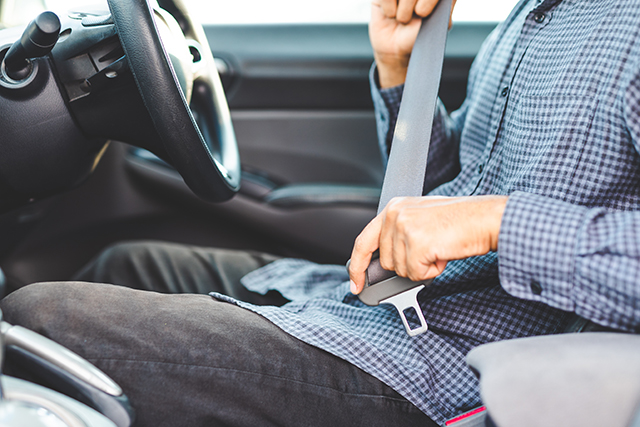

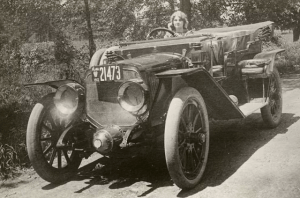
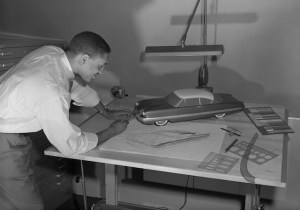



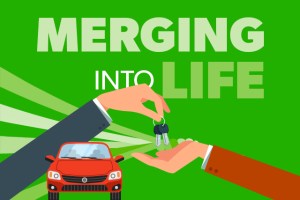
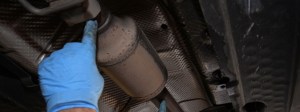




My father started installing lap belts in the front seats of our family cars back in the mid 1950s. He had to put in the connectors, etc. I, to this day, can’t sit in a front seat without working seat belts.
In 1961, a car turned left across a divided highway in Indiana, where we were traveling with me in the backseat and my parents, belted in, in front. My mother was holding my infant baby sister on her lap. I was thrown to the floor between the seats, and my parents were fine. Even though there were no baby seats in those days, my sister was gripped so hard by my mother that she wasn’t hurt. At that time the Indiana State trooper who came to the accident took all sorts of seat belt info from my father because they were doing a safety survey of seat belt use. After that accident my father installed seat belts in the back seat, too. He also was an advocate of shoulder harnesses due to a Navy friend who figured one had saved his life in a plane accident. Later in life, before back seats had seat belts, an adult friend of ours was thrown over the front seats and became a quadriplegic because of an accident. I have no use for those people who don’t want to use seat belts.
Reagan famously said “government is the problem” but seat-belt history shows it can be lack of government regulation that is a problem – if the Court had listened to Reagan thousands more would have been killed and many more seriously injured. It seems despite the lawyer ads, the insurance industry, out of self-interest, is a friend of motorist safety
I lost my best friend in 1970 when we were 19 years old. She was driving a car with a bench seat that did not have seat belts. Her car was T-boned as she crossed a divided main thoroughfare, throwing her from the vehicle and breaking her neck. I still think of her often and miss her very much. If only there had been a traffic light or a 4-way stop…. OR SEAT BELTS.
The military required seat belts in cars in the 60s, failure to use it resulted in a court martial.
Is there a car with a seat belt that won’t hit a 5 foot driver in the neck?
My Lexus UX has adjustable seats and seatbelts. I am 5’1′ and I have no problem with the belt hitting my neck. I think most cars have those now. If the seat isn’t high enough, get a car pillow. That works too.
My wife, our 2 children had finished a ski day in Vermont when a winter storm started as we left in our Ford Explorer to descend to the main road back home; the car went out of control and flipped on it’s side in a ditch on the way down; all 4 of us had seats belts on and it SAVED ALL OUR LIVES!!!!! We are all true believers in the need for seat belts in cars!!!!! 😀
Sorry,
This article fails to mention that the City of Brooklyn, Ohio was the first City in the World to institute the Seat Belt Law, under the urging of Mayor John M Coyne, the longest serving Mayor of a City in the United States having served for (52) consecutive years. Not his fault the State of Ohio dragged their feet but give the guy his due – He is the one to first come up with the idea and implement a now International Law.
I cannot help but think that the same people who refuse to wear seat belts are the same people who refuse to take COVID-19 shots as they are an imposition on personal freedom. Yet we live in a society where personal freedom has never been absolute since absolute freedom results in all sorts of things that can harm others! It is true, I believe, that insurance companies pressured legislators and other influencers to require seatbelts and that may well have been to keep their own costs down and increase profits, and not necessarily for altruistic passenger safety concerns. Nevertheless, drivers and passengers DO benefit from better survival rates and fewer injuries.
Seatbelts save lives and are also used on public roads where we mutualize risks and expenses. COVID shots are a poor analogy given low efficacy along with varying (sometimes deadly) side effects for a significant portion of the population. Yet they were mandated upon millions through political shaming and termination of employment.
Science denialism is everywhere.
Glenn you make a good point about this EXCEPT comparing to people not getting Covid shots.
There are no side effects for wearing a seatbelt that can cause serious health problems or death. I wish the pro Covid shot people would let it GO. I have seen lots of bad side effects from friends and loved ones including clots that lead to death.
STOP IT
two memories: My dad would never buy a car with four doors–before seat belts–because he had heard and seen too many instances of children opening the rear doors and being injured.
A second memory: when I bought a vw bug in 1963-64 (NJ) it had anchor connectors for seat belts but no seat belts. A local civic group was installing seat belts free but they did not fit into the anchor positions. So the way they dealt with that problem was to take a big spike an create a new position to anchor the belt. I declined the installation but took the belt and purchased an adaptor that connected the belts safely. We also bought a harness for our very you son for the back seat. I’m sure it wasn’t as safe as a belt and in fact may have very dangerous but it did keep him in the car and gave him some room to stretch out and sleep.
Does any one know what year the break away rear view mirrors became mandatory?
I started using car seatbelts in the late 60’s / early 70’s because as a USAF pilot, harnessing into the aircraft ejection seat was a must, so I figured seatbelts in my car would help save me in case of a car crash.
In the late 60’s when we finally got a car with seat belts installed my father made me promise to always use it.
As he got older I did have to nag him to use his – and frequently remind him of the promise he asked of me!
Back in 1962, before seatbelts or child restraints were the law or even made available on most cars, I fell out of the back passenger door of my aunt’s moving car into a rather busy town street. I was 5 years old and my memory is of a small, white sports car (convertible) coming to a screeching halt – the driver man jumped out without opening the door, scooped me up and carried me back to my now hysterical aunt, mother and sisters. I had been in the back seat, standing and leaning against the door, talking to my sisters. We were literally 1/4 mile from our house. I fared well (scrapes and bruises only) but my shaken mother started a community drive to sell and install safety belts in all cars. Then she finally decided she needed to get a driver’s license and really became the most careful driver in town. I will ALWAYS buckle up!!
Pam, your incident reminds me of a similar one that happened several years before yours but not to me but my younger brother though I was witness to it. Our mother was driving with my brother (who was about four or five at the time) in the front on the passenger side and me in the back. As my mother made a sharp left turn off the main road to the street just before ours, like you we about a 1/4 mile from home, the front passenger door flew open. Now in those days if you remember, most passenger cars had bench seats, not bucket or contour seats like today and were covered in leather or vinyl which made them smooth and slippery. And if the car had seat belts which I doubt, none of us were wearing them. So with the centrifugal force of the turn my brother slid across the seat, like a fried egg in a Teflon skillet, and out the door landing squarely on the pavement. I looked out the back window to see my brother in his cap and coat, sitting on his keister, legs apart, in the middle of the road with a stunned and confused look on his face. Our mother stopped the car almost immediately and ran out and got him. Fortunately there were no cars behind us and except for some bruises he was okay. But it causes me to think that incidents like this were probably not uncommon and therefore it’s amazing it took so long for the use of seat belts to be adopted by the public especially with children.
Greetings. I have a 2962 Buick Skylark with no seatbelts. Can someone suggest a garage where I can get them installed. Thank u
By the time 2962 comes along, you’ll want that hover conversion as well.
About 40 years ago I watched a safe driver film hosted by a 25 year veteran of the Michigan state police. WE saw a number of horrific crashes and their investigations. THe cllincher was that the trooper said that he had never unbuckled a dead person. I was an immediate convert.
Because masks don’t do anything for the uninfected wearer. An infected person wearing a mask is what makes you safe.
Because they don’t want anyone telling them what to do. With so many that died, how could you not want to wear them.
Here’s a true-life story of seat belts saving lives; mine, and my family. Around 1956 my family was going from Phildelphia to Savanah, Ga, to visit family. My father was a firefighter and had seen a lot of car crashes in his time and decided to install lapbelts in our brand new Ford Fairlane 500 car. He installed these belts the night before we left for Georgia and demanded my mom, brother and I wear the belts on the trip. On our return home we were pulling off US Route 301 in Wilson, NC, for the night. We were stopped when a distracted driver slammed us from behind, she was traveling about 60 mph when she hit us. I still remember the day quite well, and witnesses said our car spun around three times, the doors were smashed opened as well as the trunk. All of the contents were spread out all over the highway. My father broke his neck, my mom her back, and my brother and I banged our heads on the ceiling of the car, but we all survived and it was solely due to my father’s intuition that seat belts saved lives. Fortunately, after many months in the hospital, my mom and dad came home but we all survived and only because we wore our seat belts that faitful day in Auguist 1956. I’ve retired after a long career in the fire service where I again was witness to too many crashes where people would have survived if they had been wearing restraints. These things do safe lives and I’m eternally grateful to the inventor of the belt systems.
Thanks for your first person story Al B., and for your many years of service as a firefighter. I truly do not understand those that don’t take the two seconds to buckle up.
I remember when some cars were equipped with airline type latches on seat belts (Chrysler corporation cars, if I remember right) others were equipped with the push button latches that all cars now have. I’m sure this is a Federal regulation today. I was wondering why the airline type wasn’t selected. They seem to be easier to operate in an emergency.
I agree; the airline buckles are much easier to use. The older I get, the more the push button type becomes difficult. My fingers and hands just aren’t as agile as they used to be.
Hmm. How about motorcycle helmets? How did that obviously life saving intervention avoid becoming law everywhere?
Great Article! Bravo to Volvo for sharing the knowledge of seat belts free of charge.
They deserve a Nobel Prize.
My 1990 VW Passat had the automatic shoulder belt that was designed to move over your shoulder when you put the key in the ignition. Nice idea, however you had to manually clip the lap belt (a separate belt) in place to affect a 3 point belt.
I stopped to get ice cream with the kids and I was holding my cone when I put the key in the ignition. The automatic belt cut the ice cream cone in half and threw the top (with the raspberry ice cream) it into the back seat where my son caught it. I am sure that there are many similar stories like this from cars with this feature.
The automatic lap belt was a nice idea, but I much prefer have the control of clipping in myself.
If a rider refuses to wear a seatbelt, please do not expect the public to subsidize any short or long term medical care required due to an injury that would normally be prevented by seatbelt use.
Why don’t news reports give the seat belt information when reporting crashes and occupant deaths? Tell us how many of those people thrown out of a car were wearing seat belts.
Totally agree!! Your decision not to wear seat belts or a motorcycle helmet indirectly can affect me. Unless you are instantly killed and have no dependents.
I agree that seatbelts are a necessity and indeed save lives. My big question is if we’re in an enclosed vehicle and it’s mandatory to wear them, why are motorcycle riders not enforced to wear helmets, they are even more likely to be hurt badly if they land on their heads
Some states do indeed have helmet laws. In both cases though, the laws are largely a result of insurance companies using lobbying and propaganda, not some sort of sincere care for human safety.
I own a 1966 Chevy Impala, had it for years (no, I didn’t buy it new, not that old), and it has lap belts. I also have the original window sticker for it, it was in the glove box. The belts weren’t standard equipment, the original buyer had to pay extra for them.
On another note; the car also has a rigid steering column pointed directly at your chest and a very lightly padded metal dash with a top that kind of juts out….sort of like a guillotine. It’s a beautiful car though…
In the mid 1960s our family took several, three week long, summer car trips from New Jersey all the way to the west coast and back. Our big old Chevy had seat belts and my father required us to wear them. I have worn them ever since.
As far back as I can remember, we always had seat belts in the car. My mom and dad wouldn’t start the car until they heard “the big click” from everybody. I’ve used them ever since and they’ve saved my life at least twice.
How could this article omit “Unsafe at Any Speed” the best seller that brought seat belts to the attention of the general public written by Ralph Nader, the most famous advocate for consumer protection legislation in our time? Auto companies attacked him, of course, even though the increased cost of seat belts in cars was passed along to consumers anyway.
Seat belt saved me when I head on crashed into a tree in my 62 Corvair
Thanks for mentioning this. I was shocked to read an article about the history of seat belts without a single mention of Ralph Nader. Millions owe their lives to him.
We thought seat belts such a good idea, that we had them installed when we bought a used 1954 Ford in 1961 as our first car. In 1963 we bought a new Corvair which came with lap belts. We soon replaced them with 3-point belts which were available at the local auto store, and have used the 3-point belts since. It is such a simple idea, as is the corona virus vaccine today.
Wearing seatbelts is an absolute no-brainer. They are comfortable, they save lives, and on at least two occasions in the past, they have saved me from a serious injury due to a car accident. Just wear them, and stop complaining
Nice anecdote. But it’s still up to the individual. Screw the insurance companies who lobby on people’s fear.
Insurance companies lobby on what will cost them payouts. They have hard data on everything imaginable.
Yeah, let’s blame those insurance companies for not wanting to pay for all those funerals where people didn’t wear seat belts, and there were millions of them. Insurance companies actually want people to LIVE and pay for their injuries rather than die, paying for their funeral and watch families ripped apart by grief and loss. Such fear mongering on the part of insurance companies – how dare they lobby for public safety.
New Hampshire does not have a seat belt law because the legislature learned taht 95% of the residents wore them without a law, so the did not pass the law deeming it unessary.
I remember that the 1956 Ford that my Dad bought came with seat belts. Those later saved both me and my Dad when an accident caused our car to tumble sideways down a hill in AZ. It came to rest sideways against a saguaro cactus. Some passersby saw us climbing out of the cars door covered in flour from a bag that hit my Dad in the head. They later told us that they thought that we were ghosts rising from the dead.
I was surprise that the article seemed to completely ignore the Ford big pitch for safety in 1956 — they were making a big deal about seat belt, and I think other things like padded dashboard, maybe recessed center of the steering wheel. I think the public was not all that interested. A few years later when I bought my first used car I had seat belts put is — easy and cheap.
Haha great story
Seats were forced upon us by the Insurance companies. Extensive lobbying on the State and Federal levels brought us seat belts. Then came more lobbying in the form of moving violations to force compliance. Insurance Companies hate to pay, the story of seat belts. However,,you cannot argue their effectiveness, they do work, and we should continue to use them.
Guaranteeing anything is “iffy.” Common sense would not be the most uncommon sense of all, but it is often iffy. Many people are just too stupid to use seat belts, even if common sense applies.
It was due to insurance companies that police were first allowed to look inside a vehicle to see what was going on, seat belt fastened, etc etc etc. This was a major loss of privacy and freedom for an American, “FOR OUR OWN GOOD”.